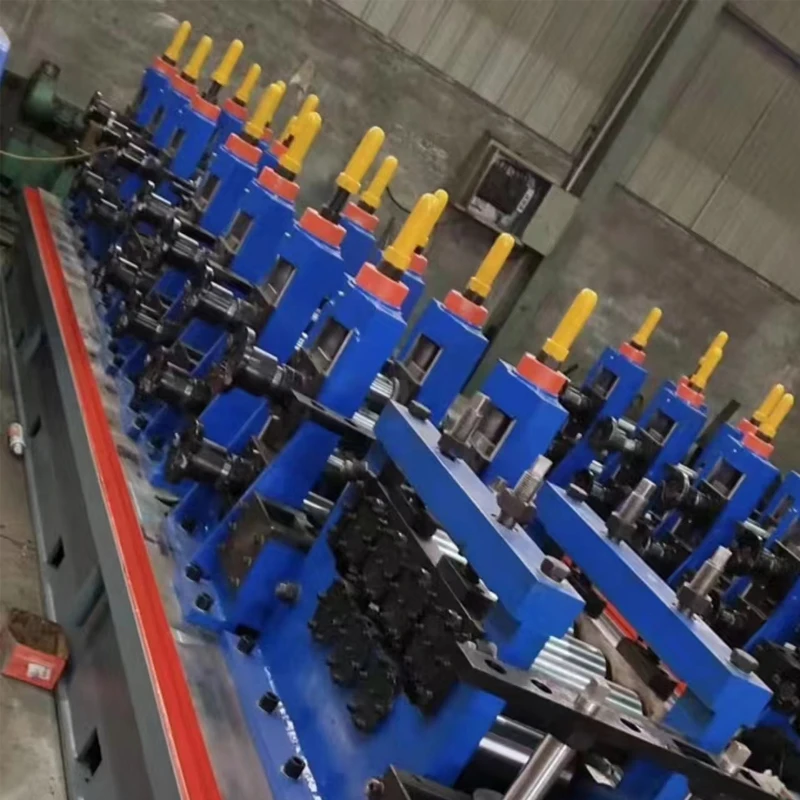Metal Wire Alignment Tool for Improved Straightening Efficiency and Precision in Manufacturing Applications
The Essential Role of Metal Wire Straighteners in Manufacturing
In the complex world of manufacturing, metal wire straightening plays a significant role that is often taken for granted. Metal wire straighteners, also known as wire straightening machines, are critical components in various industrial processes where precision and accuracy in metal wire fabrication are paramount. This article explores the significance, working principles, and different types of metal wire straighteners used in various industries.
Importance of Wire Straightening
The straightening of metal wires is essential for several reasons. First and foremost, straightened wire ensures better quality in end products. When wire is not straight, it can lead to uneven tension when fabricated into components or products. This uneven tension can cause defects, compromising the structural integrity of the manufactured parts. Industries such as automotive, construction, and electronics rely heavily on precision wire, where any deformation could mean failure in assembly or function.
Furthermore, straightening enhances the process efficiency of subsequent manufacturing stages. For example, in processes like welding, bending, or coiling, straightened wire flows smoothly through machines without causing jams or mechanical issues. This not only saves time but also reduces wear and tear on expensive machinery. Ultimately, this leads to improved production speed and lower operational costs.
The Working Principle of Wire Straighteners
Metal wire straighteners operate on a relatively simple principle—applying a series of mechanical forces to the wire in order to align its shape. The most common method involves drawing the wire through a series of rollers or straightening dies. These machines operate through several stages
1. Feeding Mechanism The input wire is fed into the straightening machine, usually through a coil or straightened form.
2. Orientation As the wire passes through, it encounters a series of rollers aligned at specific angles. These rollers exert pressure that manipulates the wire’s shape.
3. Straightening The distinct angles of the rollers are designed to push against the wire at various points, effectively pulling it into a straighter line. The machine may also incorporate a heating element for processes involving harder metals that require additional softening before straightening.
metal wire straightener

4. Output Once the wire has been straightened, it exits the machine as a uniform product, ready for further processing.
Types of Metal Wire Straightening Machines
There are several types of metal wire straighteners available in the market, each designed for specific applications. Some common types include
- Roller Straighteners These are the most frequently used types of straighteners, employing multiple rollers arranged in a configuration that redirects and straightens the wire path.
- Mechanical Straighteners These machines utilize mechanical arms or levers to apply force at specific intervals along the wire, ensuring a controlled straightening process.
- Hydraulic Straighteners Ideal for handling thicker wires, these employ hydraulic pressure to provide consistent force, adjusting to the wire's shape and material properties.
- Automatic Straighteners Equipped with sensors and computerized controls, these machines offer higher efficiency and precision. They can automatically adjust settings based on the type of wire being processed.
Conclusion
Understanding the significance and functionality of metal wire straighteners is essential for anyone involved in manufacturing or metalworking industries. These machines are not merely ancillary equipment; they play a critical role in ensuring product quality, operational efficiency, and cost-effectiveness. As technologies advance, the designs of these machines evolve, incorporating features such as automation and improved materials. The future of metal wire straightening looks promising, with innovations that will likely enhance the capabilities and efficiency of manufacturing processes around the globe.
-
High Frequency Straight Seam Welded Pipe Production Line-BzZhou Xinghua Machinery Equipment Manufacturing Co., LTD.|line pipe steel&welded gas pipeNewsJul.30,2025
-
High Frequency Straight Seam Welded Pipe Production Line-BzZhou Xinghua Machinery Equipment Manufacturing Co., LTD.|High Precision&Automated SolutionsNewsJul.30,2025
-
High Frequency Straight Seam Welded Pipe Production Line - BzZhou Xinghua Machinery Equipment Manufacturing Co., Ltd.NewsJul.30,2025
-
High Frequency Straight Seam Welded Pipe Production Line-BzZhou Xinghua Machinery Equipment Manufacturing Co., LTD.|Precision Welding, High EfficiencyNewsJul.30,2025
-
High Frequency Straight Seam Welded Pipe Production Line|BzZhou Xinghua|Precision Welding&EfficiencyNewsJul.30,2025
-
High Frequency Straight Seam Welded Pipe Production Line - BzZhou Xinghua|Precision Engineering&EfficiencyNewsJul.30,2025


